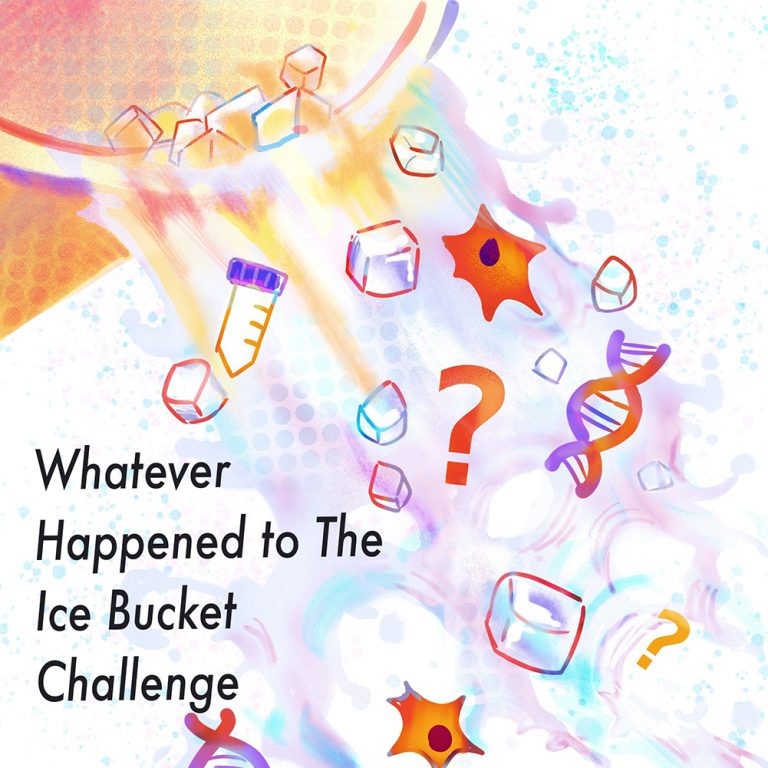
Written by Samuel Salamun
Illustrated by Jenny Zhang
Once upon a time (in 2014) before TikTok even existed, there was a trend that swept across the globe. Yes, I am talking about the ice bucket challenge. This challenge was created to raise public awareness of amyotrophic lateral sclerosis, or ALS for short. This debilitating disease results in the loss of motor neurons that control voluntary muscles, followed by progressive muscle weakening and death within 3-5 years of disease onset. Although the exact cause of ALS is unknown, some genes have been linked with familial ALS cases. However, we still don’t understand how some these genes contribute to the disease. That is why the ice bucket challenge was so important. Aside from raising awareness, this campaign succeeded in raising over $220M worldwide, 67% of which went into research funds! Now, the question is: how has ALS research truly progressed in the past 6 years?
A research group from the University of Toronto is on a quest to better understand ALS. To do this, the researchers used an exciting gene-editing tool called the CRISPR-Cas9 system to introduce the same exact mutation identified in ALS patients, into mice. This unique mutation is located in the Matrin 3 (MATR3) gene, which provides the genetic code for MATR3, a protein that functions in the nucleus of cells. Interestingly, the researchers found that mice with this mutation developed symptoms similar to those observed in ALS patients, such as motor coordination deficit and muscle weakness. When they looked at the mice’s cerebella (the plural of cerebellum, a major part of the brain that controls voluntary muscles), they found a loss of a group of neurons called Purkinje cells. Ultimately, the researchers concluded that this neuron degeneration was caused by the loss of MATR3 proteins in Purkinje cells, which can be traced back to the introduced mutation in the MATR3 gene. From this study, the researchers were able to bring to light the mechanisms behind ALS disease progression caused by this specific mutation in MATR3.
Although there is still a long way until we have a cure for ALS, the mice model generated from this study can be used to test a wide variety of novel therapeutics to better treat ALS in patients. In the bigger picture, this study also demonstrates the importance of animal models in understanding human diseases.
Sources:
- Kao, C.S., van Bruggen, R., Kim, J.R. et al. Selective neuronal degeneration in MATR3 S85C knock-in mouse model of early-stage ALS. Nat Commun 11, 5304 (2020). https://doi.org/10.1038/s41467-020-18949-w